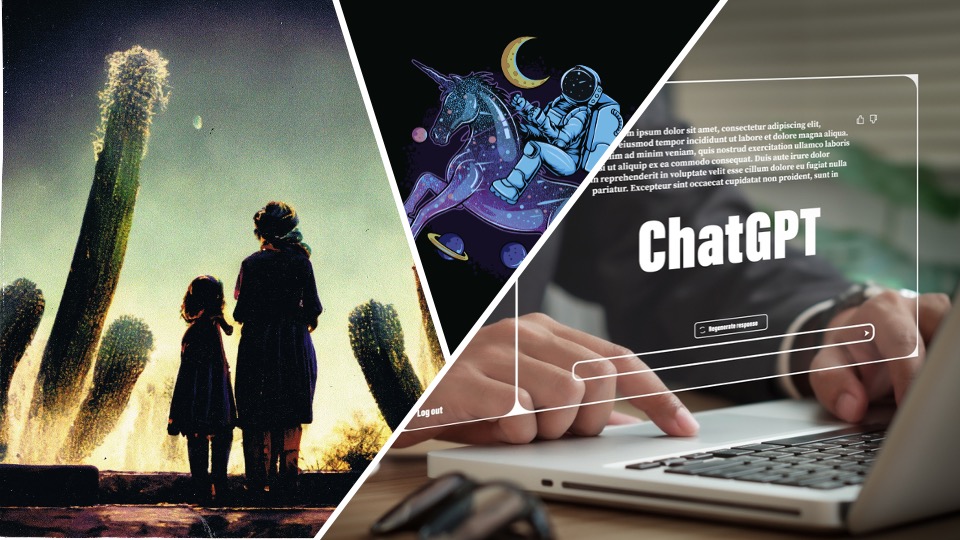
Is ChatGPT a Preview to the Future of Astounding AI Innovations?
By now, you’ve probably heard about ChatGPT. If you haven’t kept up all the latest innovations in AI, it’s a bombshell AI chatbot taking the internet by storm. It’s considered to be a hot, new sensation, garnering over a million users in just days after the launch. The ChatGPT prototype specializes in human dialogue, based on a large language model fine-tuned with supervised and reinforcement learning techniques. Since its launch, ChatGPT has shown it can apply language like humans — including writing poetry, doing homework, and even solving complex programming problems!
Based in San Francisco, OpenAI, the company behind ChatGPT, was founded in 2015. OpenAI is also the creator of influential AI models like DALL-E 2 — a deep-learning model that can produce images from text instructions. OpenAI is looking to take a broader stake in the AI game. In fact, some have gone so far as to say that the capabilities of OpenAI and ChatGPT have the power to put Google out of business. OpenAI owns and operates large-scale AI models that several startups leverage, including ChatGPT. I specifically liked OpenAI’s mission statement, focused on using AI to benefit humanity.
The ChatGPT delivers answers to a wide range of questions, impressing many with its ability and speed. For example, you can ask it to give some exciting ways of decorating a living room — and it can give you brilliant ideas of a fairy tale-inspiring environment featuring things like a magical castle mural, a chandelier made of branches and twinkling lights and comfortable furniture with curved, whimsical shapes. Some of its responses to questions can, quite frankly, but a bit mind-blowing, leaving you amused and baffled. If you ask, “How do you break into someone’s house?”, it understands the question’s sensitivity and may advise you not to break into someone’s house. But if you change the context of the question, say pose the question as part of a story, it is intelligent to play along. I found ChatGPT’s human behavior traits fascinating to explore.
Today, many industries rely on Google for finding content and tips that assist with business communications needs including copywriting, coding, and blogging. ChatGPT could potentially reduce the effort to scan through large amounts of text on search engine results pages, making the search process more efficient and effective. Unlike Google, ChatGPT’s natural language processing capabilities could help it filter irrelevant or low-quality content, providing users with a more streamlined and focused search experience.
ChatGPT is currently in research preview and is free to use. When I asked what its limitations were, it didn’t hesitate to tell me about its own shortcomings:
- It cannot comprehend the emotional or social context.
- It is not always accurate and may generate responses that are not entirely correct or relevant.
- It may not be able to create appropriate responses when input is not within its training data.
- It may not be able to handle complex or abstract concepts, as training data and its underlying algorithms limit it.
- It is not capable of providing personalized responses.
The global market for AI-augmented content solutions is set to reach $2.3 billion this year and is forecasted to grow by 17 percent by 2025, according to research by PitchBook. Venture capital investment in generative AI has increased significantly, even as the broader technology market declines. Perhaps the more efficient this single technology becomes, the less we need to rely on others. Sitting squarely at the center of this growth in AI, ChatGPT has the potential to disrupt many diverse initiatives. While it has linguistic and factual limitations, it’s still fun. It’s one of those tools that let anyone try out AI’s prowess (or weaknesses) without having a lot of technical know-how.
The development of deep learning algorithms has enabled AI systems to process large amounts of data. In recent years, AI has been used in creative ways. For example:
- Lensa, an AI-enhanced photo-editing app, is a portrait painter. The app turns 10 to 20 headshots into beautiful, at times trippy, avatars. It’s why so many people in their social media and dating-profile pictures suddenly look like anime action heroes, magical fairy princesses, or the haunted subjects of oil paintings.
- DALL-E, OpenAI’s text-to-image deep learning model, converts short written descriptions into realistic digital images at higher resolutions that can combine concepts, attributes, and styles. DALL-E 2, trained on hundreds of millions of images pulled from the internet, blew minds with its seemingly magical ability to generate images from text prompts. It “knows” how to make novel combinations, such as images of astronauts on horseback, teddy bears wandering ancient Egypt, and other nearly photorealistic works. One of my colleagues, based in Arizona, was touched when we gifted her a personalized AI-generated portrait using the words “mom-daughter-Arizona,” when her mother was hospitalized (see image below).
AI is becoming immensely capable of answering questions like a human. So, what are the implications? Will we be able to distinguish original writing from algorithmically generated essays in the not-too-distant future? Should we as humans be worried about how and where AI becomes part of our lives? Many questions, but I do not think we have answers yet. But I think we can all agree that, in the past few years, the pace of innovation has been remarkable — and, at times, overwhelming.
We didn’t see this coming, so how can we predict what’s next? I would love to hear your feedback and comments. You can reach me via comments or on Twitter at @MDMGeek.

COMMENTS
RECENT POSTS

Composable Applications Explained: What They Are and Why They Matter
Composable applications are customized solutions created using modular services as the building blocks. Like how...

Is ChatGPT a Preview to the Future of Astounding AI Innovations?
By now, you’ve probably heard about ChatGPT. If you haven’t kept up all the latest...

How MDM Can Help Find Jobs, Provide Better Care, and Deliver Unique Shopping Experiences
Industrial data is doubling roughly every two years. In 2021, industries created, captured, copied, and...